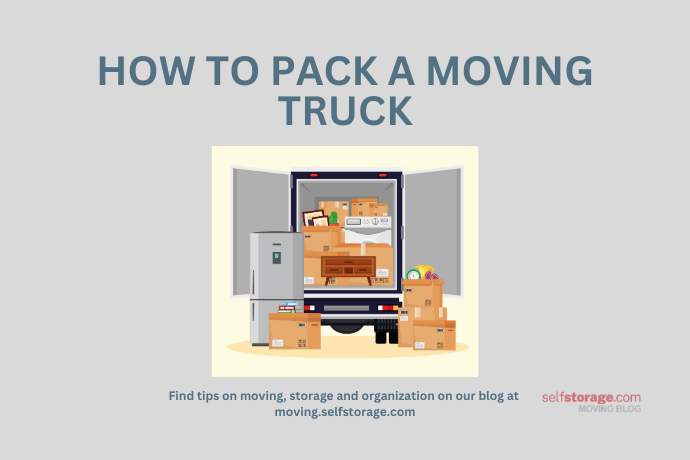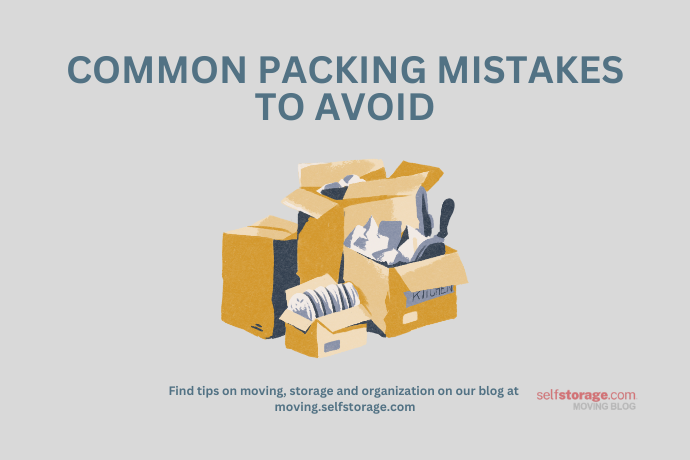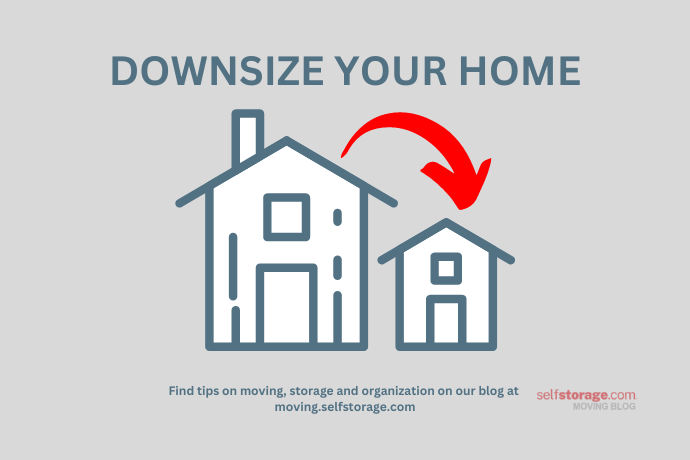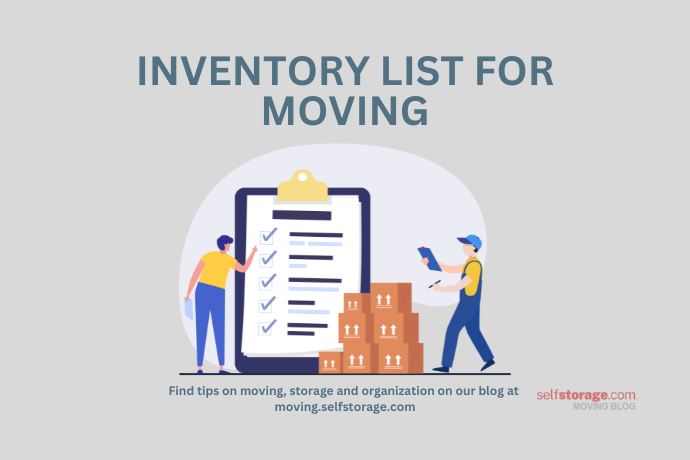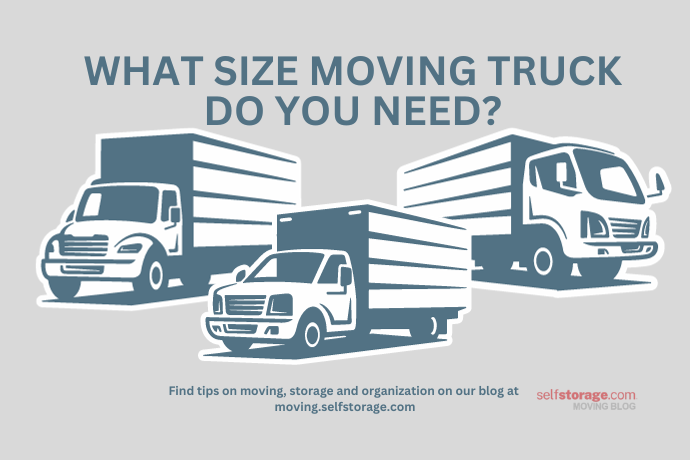What’s covered in this article – click on a link to learn more:
- Get a Moving Game Plan
- Step One: Have what you need, when you need it
- Step Two: Figure out exactly how much space you’re working with
- Step Three: Keep, Donate, Toss
- Step Four: Labeling and Inventory
- Step Five: Disassemble what you can
- Step Six: Handle with care
- Step Seven: Load It In
- Step Eight: Give it all a final inspection
- Step Nine: Safety first
- Step Ten: Unloading
Moving to a new home can be an exciting but challenging endeavor. If you’re DIYing it, one of the most critical aspects of making your move successful is properly packing your rental truck. The way you load and organize your belongings can mean the difference between a smooth transition and a chaotic, stressful experience.
Get a Moving Game Plan
A successful move begins with a well-thought-out plan, which includes learning the art of packing a moving truck. I went ahead and did some due diligence, checking in with a number of moving companies, big and small, to see if I could come up with a professionally-recommended order of operations for loading a moving truck. After piecing the advice together, here’s what I found:
- Heavy and Large Furniture: First on; heavy and bulky furniture items such as sofas and dressers. Place them against the truck’s walls to distribute weight evenly.
- Mattresses and Box Springs: Stand mattresses and box springs on their sides along the walls to save space.
- Mirrors and Flat Items: After wrapping and covering the item, stand delicate mirrors, glass tabletops, and other flat items on their edges and secure them between any mattresses or padded items.
- Long Items: If you have long items like curtain rods or carpets, place them on top of the other items, securing them to prevent sliding.
- Major Appliances: Load refrigerators, washing machines, and other large appliances near the front of the truck, securing them to prevent movement.
- Disassembled Furniture: If you’ve taken apart any furniture, load these parts after the larger pieces.
- Boxes and Small Items: After the big items are in place, these smaller items can fill the remaining space. Group similar items together, and make sure to distribute the weight evenly throughout the truck.
- Fragile and Valuable Items: Load delicate and valuable items like electronics, glassware, and artwork, using plenty of padding and securing them to prevent shifting during transit.
- Fill Gaps: Fill any remaining gaps with soft items like blankets, pillows, or cushions to prevent items from moving around.
- Essentials Box: Pack a box with essential items you’ll need immediately upon arrival at your new home, such as toiletries, a change of clothes, and important documents. Keep this box easily accessible.
Keeping this in mind, here’s a how-to guide that breaks it all down into 10 manageable steps to help you navigate the intricacies with the precision and expertise of a pro, so that you’ll maximize your space, ensure the safety of your belongings, and prevent shifting during transit.
Step One: Have what you need, when you need it
Well before you’re ready to methodically load it all on, you’ll need to gather the necessary packing materials. Here’s a quick list to get you started:
- cardboard boxes
- strong packing tape
- bubble wrap
- packing paper
- moving blankets
- mattress covers
- furniture sliders
- a dolly or hand truck
Buy high-quality packing materials from a specialized supplier or moving company well ahead of schedule to ensure you have just what you need, and to avoid last-minute rushes and potential shortages.
Step Two: Figure out exactly how much space you’re working with
To pack your moving truck efficiently, you’ll have to get hands on, measuring the dimensions of the truck’s cargo area and calculating the cubic footage. Once you understand the specific capacity, you can plan accordingly.
Step Three: Keep, Donate, Toss
All moves present the unique opportunity to assess your stuff! Before my wife and I embarked on our most recent downsizing adventure, we decided to tackle the challenge by creating a weekly decluttering ritual.
An hour or two a day, we stationed ourselves in a specific area of the house, and used the ol’ three-pile system to quickly separate our possessions into things that would definitely be coming with us, items that could be useful for others, and those destined for the trash. By moving day, we had successfully and significantly lightened our load, ensuring that only items we need and love would be making the journey with us.
Step Four: Labeling and Inventory
Labeling boxes with their contents and their designated rooms is crucial. This simplifies the unloading process and makes finding what you need quick and easy. As you make your way through the packing process, maintain an inventory list to keep track of your items. This list will become your go-to reference when unloading and making sure that everything has arrived at your new home.
Step Five: Disassemble what you can
Take apart large furniture pieces to save space and make them easier to load. Keep all screws and hardware in labeled bags attached to the furniture itself when possible. This is a great way to keep it simple, and make reassembly at your final destination a cinch.
In fact, this is the perfect time to use a labeling pro tip. If you have multiple mattress/box spring sets, on the move out, label each mattress, box spring and disassembled bed frame with the owner’s name right on the item (not just the inventory sheet) so you know exactly which room they’ll be moving into.
Step Six: Handle with care
Fragile items, like glassware, dishware, electronics and heirlooms, deserve special care and attention. If you’ve saved the original packaging, pull it out and stabilize your valuables in their perfectly sized styrofoam packs. Otherwise, individually wrap these items in packing paper and bubble wrap. Place them in sturdy boxes and fill any gaps with cushioning materials, like packing peanuts.
Step Seven: Load It In
Using the aforementioned best way to load a moving truck order of operations, here are a few extra considerations worth mentioning.
Take care of your back!
The last thing you want is to wrench your back and put yourself down and out at any time during your move, so it’s essential that you use proper lifting techniques. There’s no shame in giving yourself a refresher on good lifting posture, or asking for a team lift when the weight or size of the item demands it.
Make sure you’re hauling an even load.
One of the most important things to keep in mind when considering how to pack a moving truck is keeping an even distribution of weight from front to back and side to side to maintain the truck’s stability.
Place the heaviest items, large furniture and appliances, at the front of the truck and against the walls. This balances the weight and helps with stability. Moving straps and furniture sliders can help with the loading, high-quality straps or tie-downs that crisscross and attach to the truck’s anchor points can add further security and prevent any shifting, and moving blankets can provide extra protection to avoid any dings, scratches or exterior damage.
Boxes, boxes and more boxes.
I know that for me personally, by the end of every move, I’ve felt a little bit like a box monkey. But, despite the repetition of it all, there are some strategies to employ for loading all those boxes.
Put your heavy boxes on the bottom, and lighter or more fragile items up top. Utilize your vertical space to your benefit, while creating stable layers by packing boxes snugly against one another to minimize gaps and movement. Secure your stable stacks with tie-downs and straps, and fill any existing gaps with soft materials, like pillows, cushions or blankets. This optimizes space and prevents shifting.
Miscellaneous or awkward items.
Bikes, ceiling fans, and mirrors; we’re looking at you! Now is the time to employ previous tactics. Disassemble what you can, use any mattresses as protection for large and awkward fragiles, and if your budget allows, consider investing in specialized racks to transport these items as safely and securely as possible.
Step Eight: Give it all a final inspection
Before taking off, do a thorough sweep of your home to make sure nothing has been left behind, and conduct a top-to-bottom inspection of the loaded truck to ensure that everything is secure. Double-check the tie-downs and straps to make sure they’re tight and reliable. Put your essentials bags with you, or in an easily accessible space, so you have your necessities at hand when you arrive.
Step Nine: Safety first
Remember, the truck has weight limits. You’re going to want to make sure you haven’t overloaded and gone beyond these limits, as this can affect its handling and safety on the road. Since you might not be familiar with how the truck handles and drives and you’re hauling some precious cargo, drive cautiously. Remember, this isn’t a speed run. The goal is to have you and all your belongings arrive safe and sound.
Step Ten: Unloading
The question of how to unload a moving truck should be handled in much the same way as the question of how to load a moving truck. When unloading, follow your initial plan to expedite the process. Put your inventory list and labels to use so that everything gets into the correct room, making the unpacking process as easy as possible.
Packing a moving truck efficiently requires careful planning, organization, and the right techniques. By following the 10-step process outlined above, you can ensure a smooth and stress-free moving experience.
